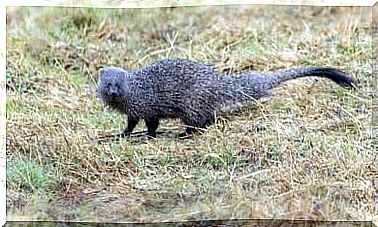Orthoptera Insects: This Is What They Are
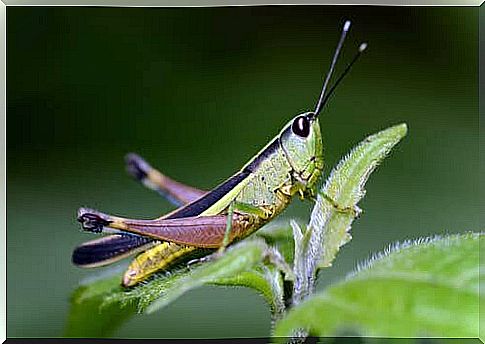
Orthoptera are an order of “singing” insects that emit strident sounds, familiar to those who live in the countryside or take long walks in the fields. The type of sound emitted by these insects is known as stridulation, it is typical of these invertebrates and is produced by a screeching apparatus.
There are more than 19,000 species of orthoptera, almost all tropical, but distributed throughout the planet. For example, grasshoppers, crickets and locusts belong to this group. Let’s find out what orthoptera insects are.
Classification of orthoptera insects
This order of insects consists of:
- The suborder Ensifera, characterized by long antennae, in many cases longer than the body. These orthoptera are commonly called crickets.
- The suborder Caelifera, unlike the Ensifera , has very short antennae. Includes grasshoppers and lobsters.
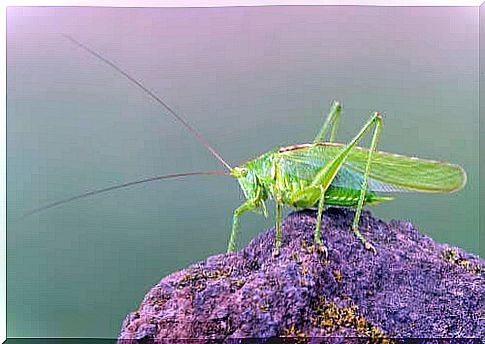
Curious Behaviors of Orthoptera Insects
Stridulation
As we have already said, one of the most notable characteristics of orthoptera insects is their ability to screech. In the suborder Ensifera , sound is produced by rubbing the front wings against each other.
On the contrary, within the Caelifera , different ways can be distinguished to produce the stridulation:
- The family of acrylates (grasshoppers and locusts) makes sounds by rubbing the femur of the hind limbs against a hardened surface of the front wings. Others do this by rubbing the leading edge of the rear wing against the trailing edge of the front wing.
- Orthoptera of the Tettigoniidae family rub their long antennae against the front wings.
Each species emits a peculiar sound, completely different from that produced by other species. This happens because all these species “sing” to fulfill an invitation to the female. This is why it is so important to recognize the call of the male of his own species.
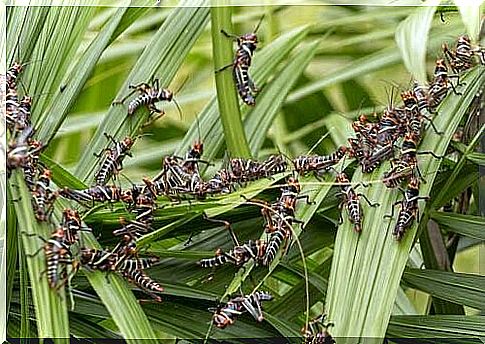
Tendency to live in a group
The tendency to live in groups is a common feature of many orthoptera. There are species in which this behavior is taken to the extreme, both during movements on the ground (nymphs) and in the air (adults), causing incalculable damage to crops.
Examples of orthoptera insects
The locust of Morocco
The locust tends to easily increase its numbers and migrate forming huge swarms that exterminate all crops. These colossal swarms can reach 12.4 billion individuals.
Since ancient times, the human being has always suffered from the presence of these parasites which, even today, constitute one of the most serious problems for agriculture.
The Moroccan locust ( Dociostaurus maroccanus ), for example, is causing serious damage in Mediterranean agriculture, as its voracity knows no bounds.
The special case of crickets
Crickets are fully-fledged orthoptera insects. Like grasshoppers, they belong to this order, but differ from them in the shape of their antennae, which are filiform and long.
They make sounds that resemble those of green lobster. And, like this one, they have “ears” (actually one should speak of eardrums) on their front legs.
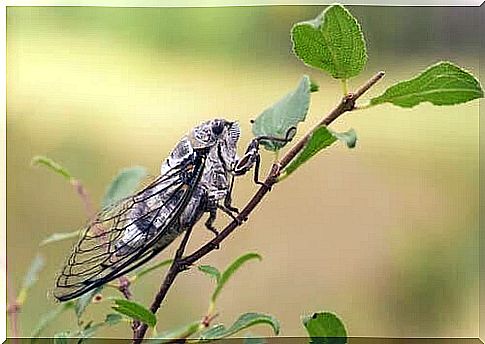
The song of cicadas
Cycads are a family of insects belonging to the Hemiptera order . They are commonly known as cicadas and are singing insects.
They are noted for the high-pitched singing of the males, which serves to attract females. This song is produced by a stridulating apparatus located on the sides of the first abdominal segment. This organ is made up of membranes called eardrums and air sacs that function as resonance boxes.
The potency of the cicada’s song is said to increase as temperatures rise. It is for this reason that cicadas seem to sing loudest during a heat wave or in the middle of the day.
Peculiarities of cicadas
Cicadas lay their eggs without covering them, usually one by one, on the ground or in cracks in the bark of trees. Other orthoptera place them between the stems and in the leaves.
Conversely, acridids lay their eggs inside a hard or rubbery capsule, which they then bury in the ground. Some species deposit them in tree trunks.
It seems incredible but there are some species of carnivorous cicadas that catch caterpillars or other insects. Still others feed on leaves and grass but supplement their diets with insects.








